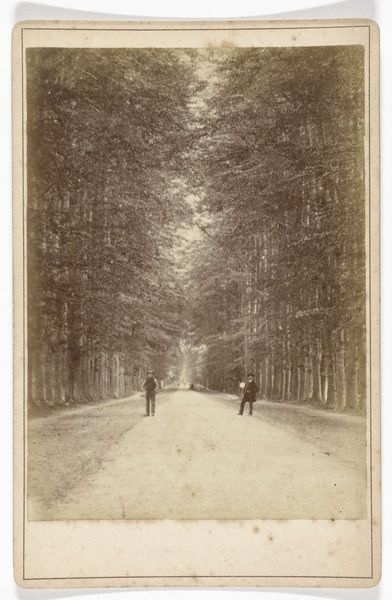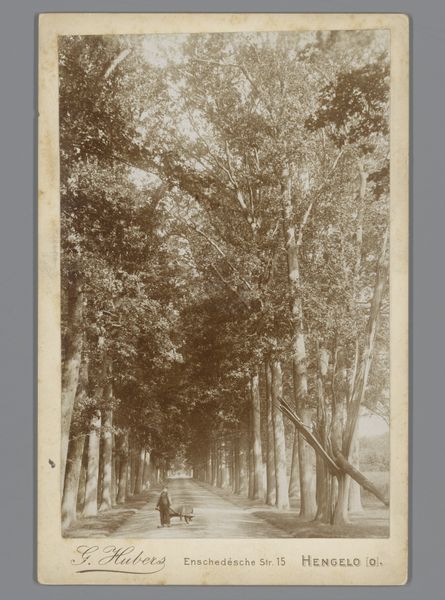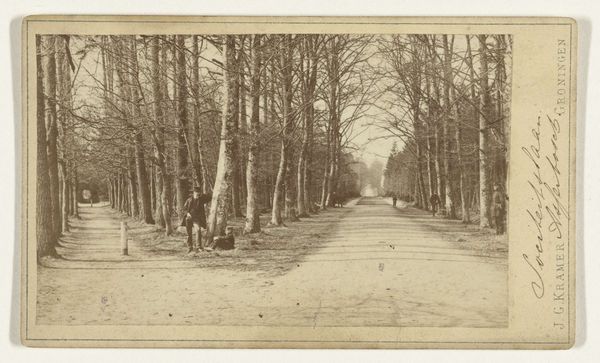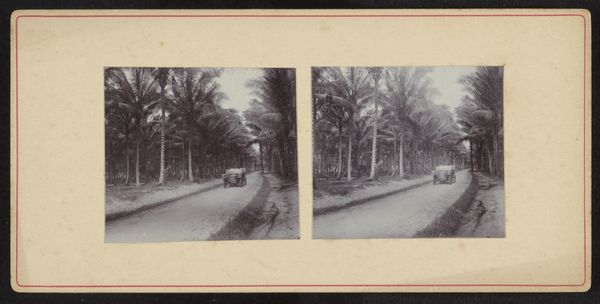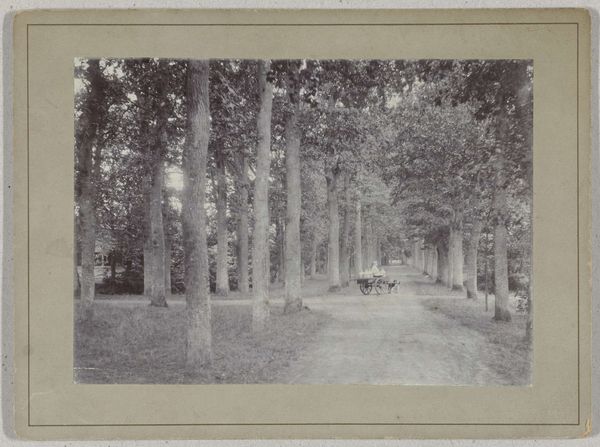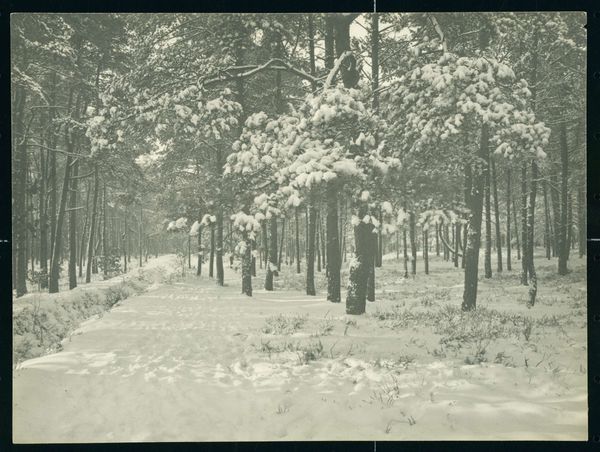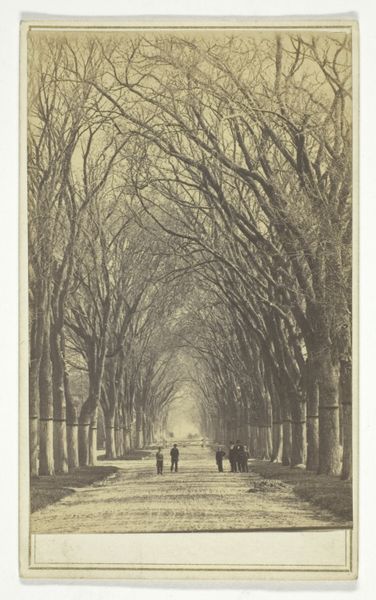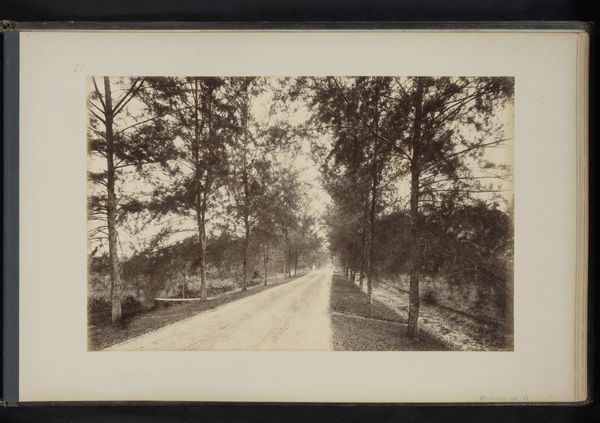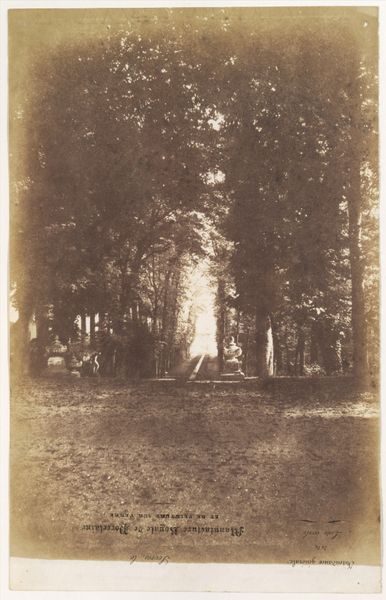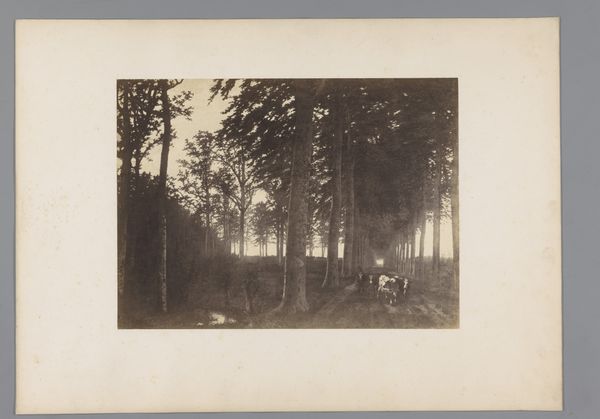
Dimensions: height 166 mm, width 107 mm
Copyright: Rijks Museum: Open Domain
Editor: Here we have an old photograph, "Gezicht op de Middachterlaan te De Steeg," dating roughly from 1850 to 1900, created by Brainich & Leusink using the gelatin-silver print process. The way the trees recede into the distance is really striking, almost creating a tunnel effect. What compositional elements stand out to you? Curator: The pronounced linearity is indeed compelling. Note how the receding trees create strong vertical lines, framing the composition. The figures serve as strategically placed counterpoints. Their arrangement—the placement, relative size and shape— establishes a rhythmic pattern, punctuating the dominant linearity with calculated visual pauses. How does the tonal range influence your reading of depth? Editor: I see what you mean. The limited grayscale definitely compresses the space. Everything seems to flatten toward the light at the vanishing point. What impact does that have on the subject? Curator: Exactly. The restricted palette enhances the two-dimensionality. This reinforces the photograph as an object in itself rather than a mere window onto reality. Observe also the soft focus; it renders the details subservient to the overall atmospheric effect, drawing the eye inexorably toward the distant light. Are you noticing the way the pictorialism aesthetic manipulates space? Editor: Absolutely, the soft focus contributes to a dreamy, almost timeless feel, a key trait of Pictorialism. This feels deliberate. I guess the composition becomes more important than documentary accuracy. Curator: Precisely! The interplay between line, tone, and focus transforms the observed world into an orchestrated visual experience. Editor: I see how analyzing these elements unlocks so much about the artists’ intent and the aesthetic movements of the time. Curator: It enriches our viewing experience and understanding immeasurably.
Comments
No comments
Be the first to comment and join the conversation on the ultimate creative platform.
